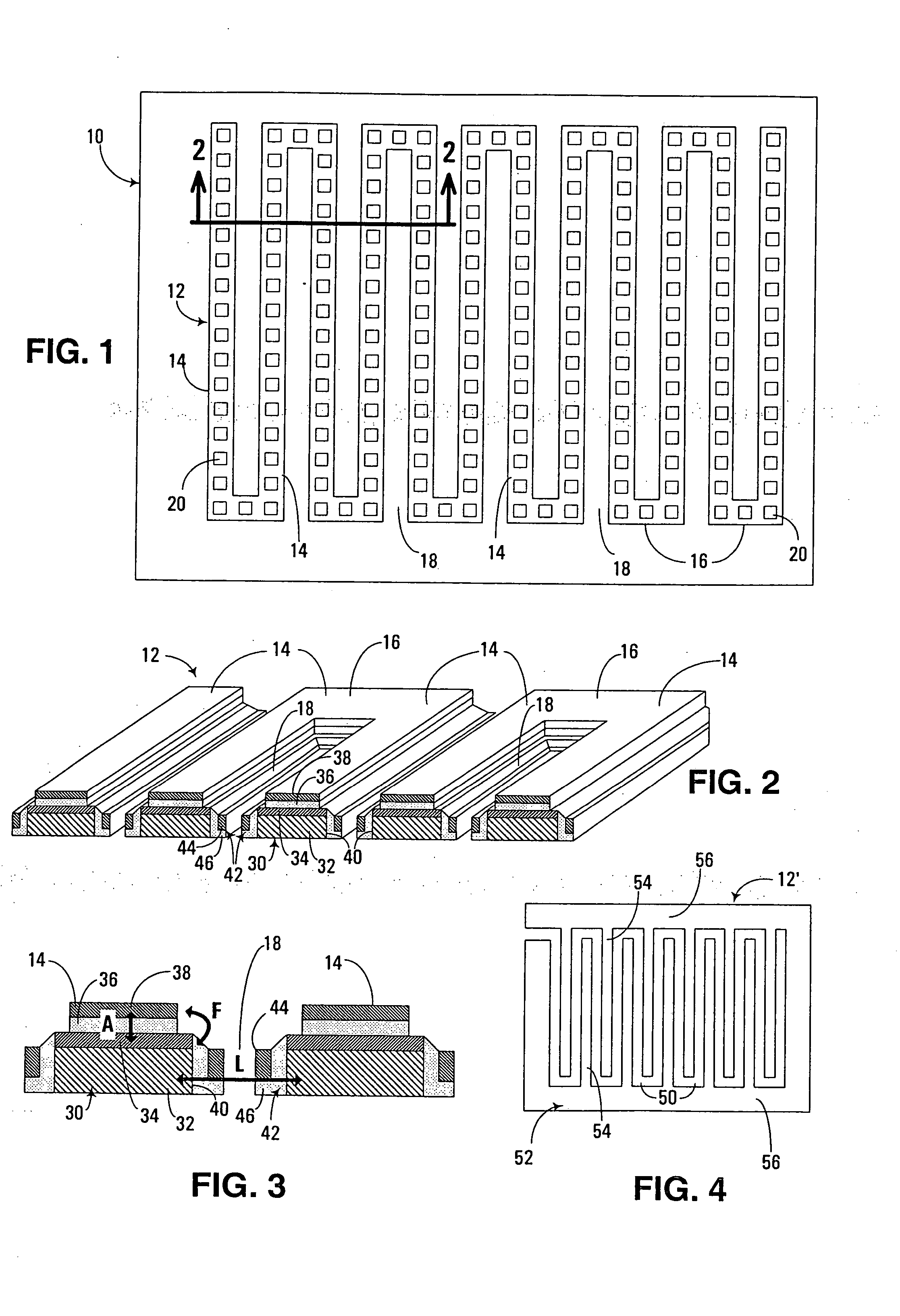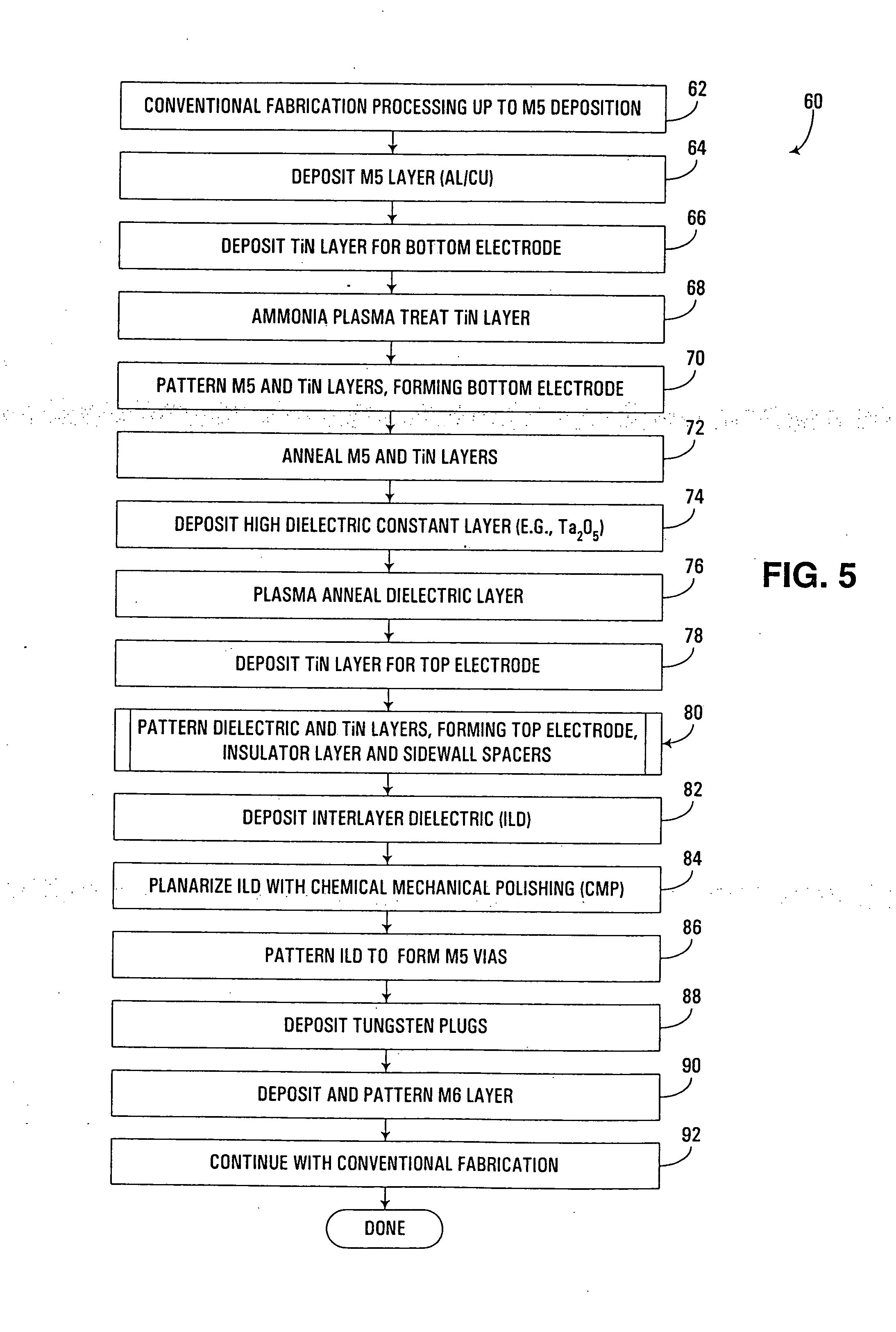Metal-insulator-metal (MIM) capacitor structure and methods of fabricating same
a technology of metal-insulator metal and capacitors, which is applied in the direction of capacitors, semiconductor devices, semiconductor/solid-state device details, etc., can solve the problems of inordinate oxidation of the bottom electrode during fabrication, limited design of capacitors providing the necessary capacitance for many applications (e.g., many rf applications), and achieve the effect of improving the overall capacitance density
- Summary
- Abstract
- Description
- Claims
- Application Information
AI Technical Summary
Benefits of technology
Problems solved by technology
Method used
Image
Examples
working examples
[0088] As discussed above, an ammonia plasma treatment may be introduced to prevent oxidation of a TiN lower electrode after M5 deposition. The process described above was tested by processing bare silicon 200-mm test wafers with different treatment times. A thin silicon nitride film was measured after the ammonia treatment. FIG. 8 illustrates the resulting silicon nitride growth on the test wafers.
[0089] The data was taken from a 49-point measurement with a 3 mm edge exclusion measured by an Optiprobe model 5240, a tool available from Therma-wave Corporation that uses spectral ellipsometry and fine angle reflectometry to measure stacks of thin transparent films. The 180 second treatment time was noted as providing an acceptable compromise between processing time and the uniformity of silicon nitride.
[0090] Ammonia plasma treatment was also found to alter voltage linearity. For test samples constructed using the aforementioned process, when varying the vo...
PUM
 Login to View More
Login to View More Abstract
Description
Claims
Application Information
 Login to View More
Login to View More - R&D
- Intellectual Property
- Life Sciences
- Materials
- Tech Scout
- Unparalleled Data Quality
- Higher Quality Content
- 60% Fewer Hallucinations
Browse by: Latest US Patents, China's latest patents, Technical Efficacy Thesaurus, Application Domain, Technology Topic, Popular Technical Reports.
© 2025 PatSnap. All rights reserved.Legal|Privacy policy|Modern Slavery Act Transparency Statement|Sitemap|About US| Contact US: help@patsnap.com



